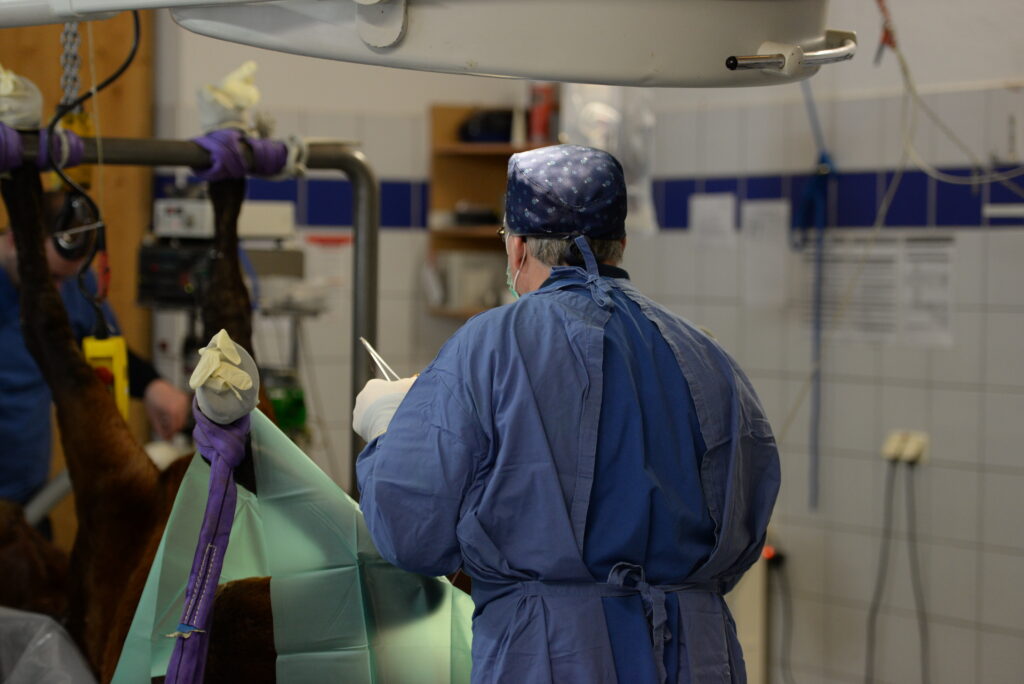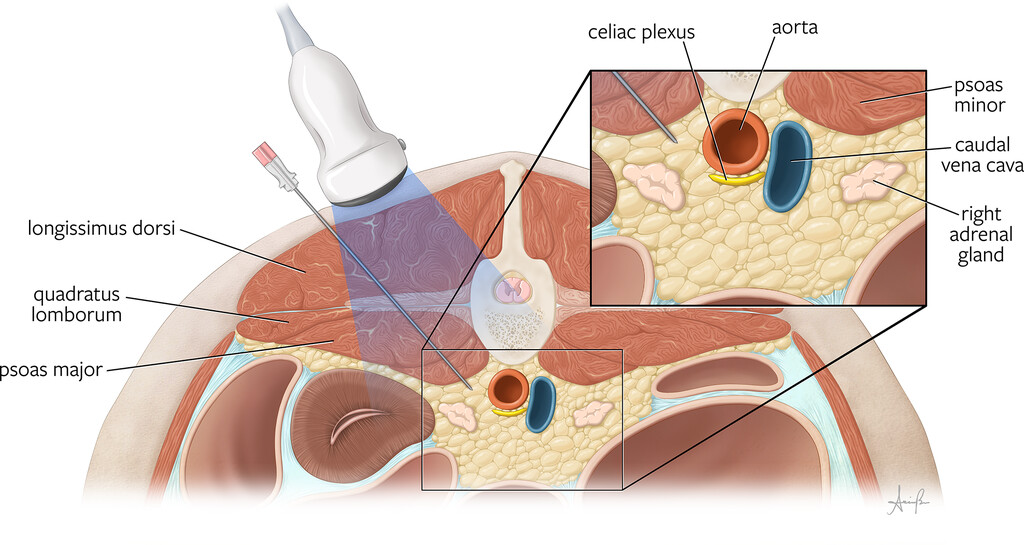
Horses might experience paralytic ileus following abdominal surgery or due to inflammation from proximal enteritis or sepsis. Sluggish intestinal motility can lead to further problems, such as adhesions, longer hospitalization time, and increased mortality risk. To address this concerning condition, researchers at Cornell University examined whether suppressing sympathetic innervation at the celiac-mesenteric ganglia and plexus would achieve a prokinetic effect that improves intestinal motility.
Study Population
Initially, the researchers examined four equine cadavers in a dye study to identify anatomic landmarks for accuracy of approaching the celiac plexus. Then, they performed ultrasound-guided anesthetic blocks of the celiac plexus in six healthy horses to evaluate its effect on intestinal motility. Because the procedure requires sedation, they performed two separate experiments using an ultrasound-based motility score:
- a) Control group: The researchers recorded the effect of an alpha-2 agonist on intestinal motility.
- b) The researchers evaluated the effect of the celiac plexus block on intestinal motility in sedated horses.
They used the same horses for both experiments, with a washout period of at least three days before starting the second phase.
In both instances, the horses were fasted for 12 hours with water access. The researchers assessed ultrasound motility at sequential times of 15, 30, and 45 minutes after sedation; one, two, three, four, and six hours after sedation; and then one hour after refeeding.
Study Findings

In the first experiment (sedation with xylazine), intestinal motility was suppressed within 15 minutes and continued to decrease by 30 minutes. Normal motility was restored at about an hour and remained stable for six hours with an insignificant increase at one hour after feeding.
In the second experiment (sedation and the celiac plexus block), the motility score increased significantly from baseline after one hour and remained elevated until four hours. The most significant difference between the two groups occurred at two hours. The authors reported, “The increase in intestinal motility after the celiac plexus block was not due to the physiologic rebound of intestinal motility after sedation but confirms an additional prokinetic consequence to the anesthetic block of the celiac plexus.”
The bilateral celiac plexus block could be administered in 10-12 minutes. The only adverse effect occurred in one horse that suffered a transient unilateral hind-limb ataxia 20 minutes after the block. This spontaneously resolved within an hour.
Following the celiac plexus block, the duodenum reached peak motility the fastest at one hour, and the cecum reached peak motility more slowly at three hours. The authors noted that using lidocaine anesthetic over the injection site for the celiac plexus block was associated with increased intestinal activity for at least six hours. Lidocaine is reported to have only a five-hour duration when used as a peripheral nerve block.
Take-Home Message
Intestinal motility was minimal when horses were fasted and sedated, but when the horses received the celiac plexus block, “overall motility peaked in 1-3 hours and remained above baseline for up to six hours.” The intestinal motility scores following the block reached higher levels than scores seen one hour after refeeding horses with just a sedative. In summary, the authors wrote: “Ultrasound-guided celiac plexus block has a significant stimulating effect on intestinal motility in fasted and sedated healthy horses.”
Reference
Delvescovo B, Chevalier JM, Campoy L, Cercone M. Ultrasound-guided celiac plexus block increases intestinal motility in normal horses. 2025. DOI: 10.2460/ajvr.24.11.0328
Related Reading
- Disease Du Jour: Improving Postoperative Outcomes for Colic Patients
- The Subtle Signs of Leaky Gut Syndrome in Horses
- The Equine Gut Microbiome: A Hot Topic
Stay in the know! Sign up for EquiManagement’s FREE weekly newsletters to get the latest equine research, disease alerts, and vet practice updates delivered straight to your inbox.




